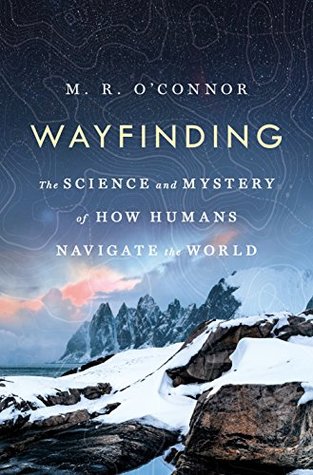More on this book
Kindle Notes & Highlights
Read between
September 20 - September 25, 2020
The novelist Audrey Niffenegger has written that there are different ways to react to being lost. Panic is one. Another is to surrender and “allow the fact that you’ve misplaced yourself to change the way you experience the world.”
What happens when we outsource navigation to a gadget? Even the previous generation of navigation tools—the compass, chronometer, sextant, radio, radar—required us to give attention to our surroundings.
At the heart of successful human navigation is a capacity to record the past, attend to the present, and imagine the future—a goal or place that we would like to reach. In this way, navigation involves not only literal travel through space but also mental travel through time, what some call autonoetic consciousness.
But neuroscientists have found that the principal place in the human brain responsible for navigation, orientation, and mapping is the hippocampus, a region of gray matter in our temporal lobe with a distinct ram horn–shaped curvature.
For the majority of our species’ existence, we traversed the earth using the landscape itself as a guide. And we seemed to have moved a lot.
Navigation devices make vast reserves of distributed knowledge available to us in an instant. But, crucially, they never require us to possess information in our own memory in the way that successful navigators have been required to do till now.
“Trying to chart an area that you don’t know yet is actually a very specific historical situation. It’s a skill that is useful for imperialists wanting to create colonies. GPS is also a very useful tool for going into unknown spaces.”
“The longevity and success of the method of loci in particular may point to a natural human proclivity to use spatial context—and its instantiation in the right hippocampus—as one of the most effective means to learn and recall information,” wrote Maguire and her coauthors in their study.
Norman Hallendy, an Arctic researcher who spent decades studying inuksuit, describes them as stones that act as mnemonics for travelers. He documented eighteen kinds in southern Baffin Island alone, each with a different name and use. An aluqarrik marks a spot to kill caribou, and an aulaqqut is for frightening caribou. Some indicate the depth of snow, the location of a food cache, dangerous ice, a fish spawning spot, or sites for mining pyrites or soapstone. Some hunters built entire fences of inuksuit that would guide the caribou herds toward their spears. Other inuksuit were designed with
...more
The sight of a pile of rocks indicates someone has simply been here before even if it was hundreds of years ago. One Iqaluit resident told me they traveled sixteen days from Iqaluit to Pangnirtung by dogsled on a trail that included some four hundred inuksuit. Others described how in whiteout conditions, inuksuit had an uncanny tendency to appear just as they began to experience the dread that they had surely lost their way.
Wisdom sits in places. It’s like water that never dries up. You need to drink water to stay alive, don’t you? Well, you also need to drink from places. You must remember everything about them.
“Language,” wrote the researchers, “can play a central role in the restructuring of human cognition.”
The Greeks and their progeny are thought to have possessed an intrinsic capacity for scientific thinking, a thirst for the accumulation of knowledge, and the desire to understand the world in its entirety. According to this hegemonic view, it was the intellect and courage of these geniuses that allowed them to transcend superstition and myth. Some historians of science today concede that other cultures have made scientific contributions, but the classic narrative remains that science is distinctly Western. Other cultures can become modern and scientific, but only the West invented those
...more
Whether it was children in Greenland learning rope tricks for sea kayaking or Kalahari hunters tracking animals, navigation was evidence of an incredibly sophisticated body of science in cultures that were widely dismissed as primitive and without scientific traditions. “These cultures created a taxonomy in which they practice these arts,” he told me. “Navigation was a way of thinking or organizing one’s environment in a scientific way. It’s an example of scientific thought that people were engaging in way before the Scientific Revolution.”
Two hundred years ago, Huth points out, any bumpkin farmer—even if they hadn’t gone to school and learned the earth rotates on an axis—would know that it is warmer in the summer because the earth is getting more direct light. “All empiricism has to start with stuff that is immediately palpable to you,” Huth told me. “The march of education—especially in the sciences—has been divorced from reality and I think that’s where you have to start.”
Terrestrial design and construction was not the primary role of craftsmen but what naval architects and shipwrights did in their downtime. Their vessels were the products of cultures where metals were not an available option, where swimming and walking were equally important, where survival at sea, more so than on land, was primary.


